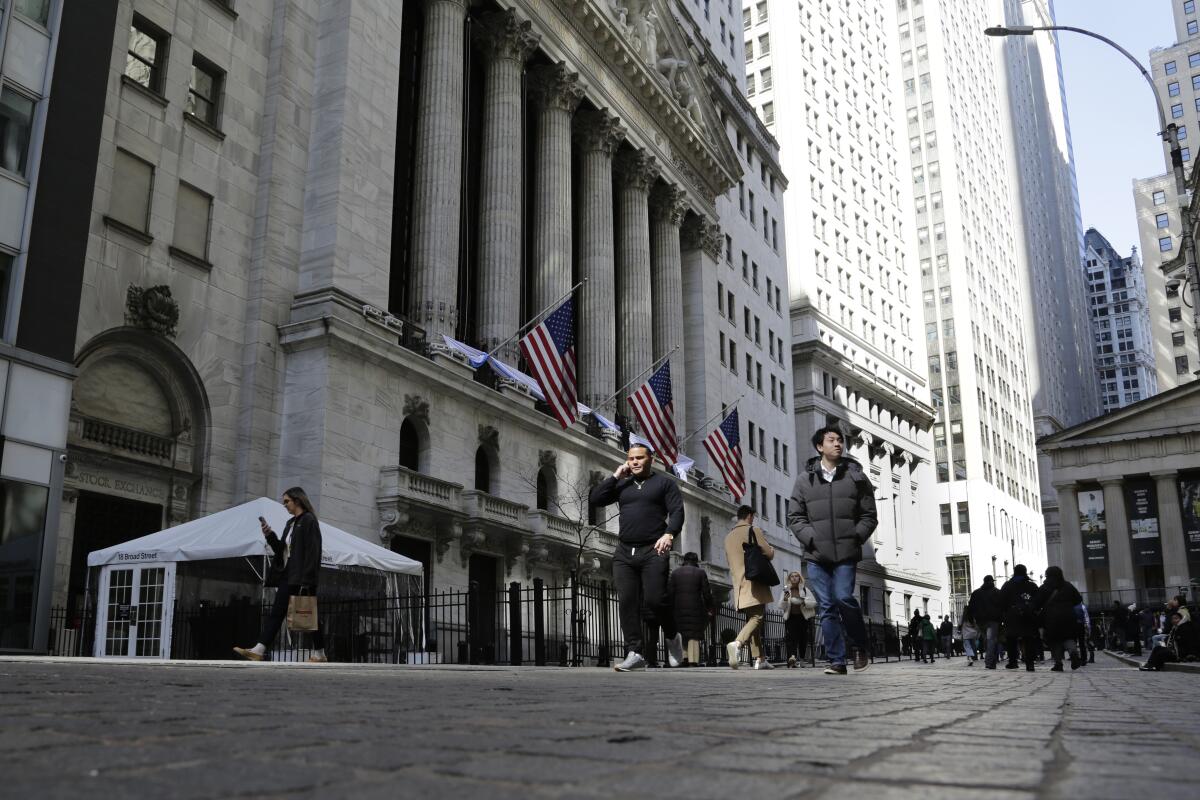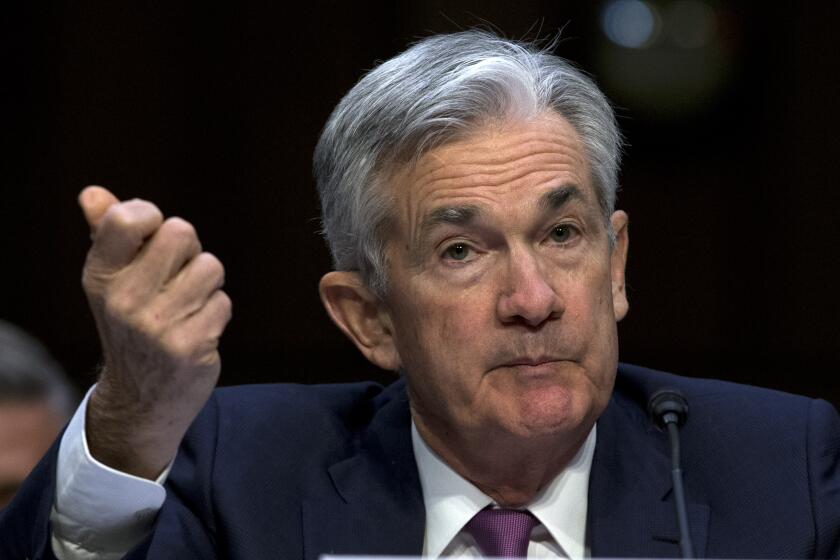Stocks rise and bond yields jump with the latest signs of a resilient economy

- Share via
Most stocks ticked higher on Wall Street on Thursday after the latest signals that the U.S. economy remains stronger than feared.
The Standard & Poor’s 500 rose 19.58 points, or 0.4%, to 4,396.44 and is on track for its sixth winning week in the last seven. The Dow Jones industrial average advanced 269.76 points, or 0.8%, to 34,122.42, and the Nasdaq composite edged down 0.42, or less than 0.1%, to 13,591.33.
Yields jumped in the bond market after data showed the U.S. economy grew at a 2% annual rate in the first three months of the year, much stronger than the 1.3% rate earlier estimated. Another report said fewer workers applied for unemployment benefits last week than expected, a sign that the job market remains remarkably solid despite much higher interest rates meant to slow the overall economy.
“The U.S. economy is currently displaying genuine signs of resilience,” said Gregory Daco, chief economist at EY. “This is leading many to rightly question whether the long-forecast recession is truly inevitable.”
On one hand, the data are a positive for investors because they suggest the economy can keep growing and support profits for companies, which are the lifeblood of the stock market. Stocks of companies whose profits are most tied to the economy’s strength were among Wall Street’s biggest gainers, including those in the financial, raw-material and energy industries.
But on the other hand, the resilient data could also lead the Federal Reserve to see the economy as strong enough to keep hiking interest rates to drive down inflation. That kept the S&P 500 swinging between small gains and losses for much of the morning.
Inflation has a way of affecting nearly every aspect of your finances, including the size of your tax refund and your retirement contributions.
The Fed has pulled rates higher at a blistering pace since early last year. High rates slow inflation by dragging on the entire economy, and they have already hurt the manufacturing and other industries while helping to cause three high-profile failures in the U.S. banking system.
Thursday’s data pushed up expectations among traders for the Fed to raise rates twice more this year, according to data from CME Group. That’s what the Fed has been suggesting it would do, but Wall Street has been slow to accept it.
The shift helped drive the two-year Treasury yield up to 4.87% from 4.71% late Wednesday. It tends to track expectations for Fed action.
The 10-year yield rose to 3.83% from 3.71%. It helps set rates for mortgages and other important loans.
In the stock market, banks rallied to some of the biggest gains. Wells Fargo rose 4.5%, JPMorgan Chase climbed 3.5% and U.S. Bancorp gained 2.9%.
Even Federal Reserve economists know that wages had no effect on inflation. But that doesn’t stop Fed Chair Jerome H. Powell from harping on labor costs and ignoring the real culprits.
The Federal Reserve said late Wednesday that the nation’s 23 largest banks would be able to survive a severe recession in its latest “stress test” of the system. Failing the test would have restricted banks from paying dividends or buying back their own stock to send cash to shareholders.
A stronger economy could also help banks make more money from making loans, though higher interest rates could also add pressure to their balance sheets.
Federal Reserve Chair Jerome H. Powell warned Thursday the central bank may have to tighten regulation of the system after several banks collapsed when rising rates knocked down the value of bonds they bought and other investments made when rates were ultralow.
Much scrutiny has been on smaller and midsize banks as Wall Street hunts for the next potential weak links in the system. Several rose Thursday to trim their big losses from earlier this year. PacWest Bancorp gained 3.3%, for example.
On the losing end of Wall Street was McCormick. The spices company fell 5.5% after reporting weaker revenue for the latest quarter than expected, though its profit topped expectations. It also raised its forecast range for profits this year, but only the top end of the range for earnings per share matched analysts’ expectations.
Micron Technology fell 4.1% for another one of the biggest declines in the S&P 500 after forecasting a larger loss for the summer than analysts expected. That was despite the memory and storage company reporting stronger results for the latest quarter than expected. Micron also said it thinks the bottom has passed for the chip industry’s revenue, and it expects profit margins to improve.
AP writers Matt Ott and Joe McDonald contributed to this report.
More to Read
Inside the business of entertainment
The Wide Shot brings you news, analysis and insights on everything from streaming wars to production — and what it all means for the future.
You may occasionally receive promotional content from the Los Angeles Times.











